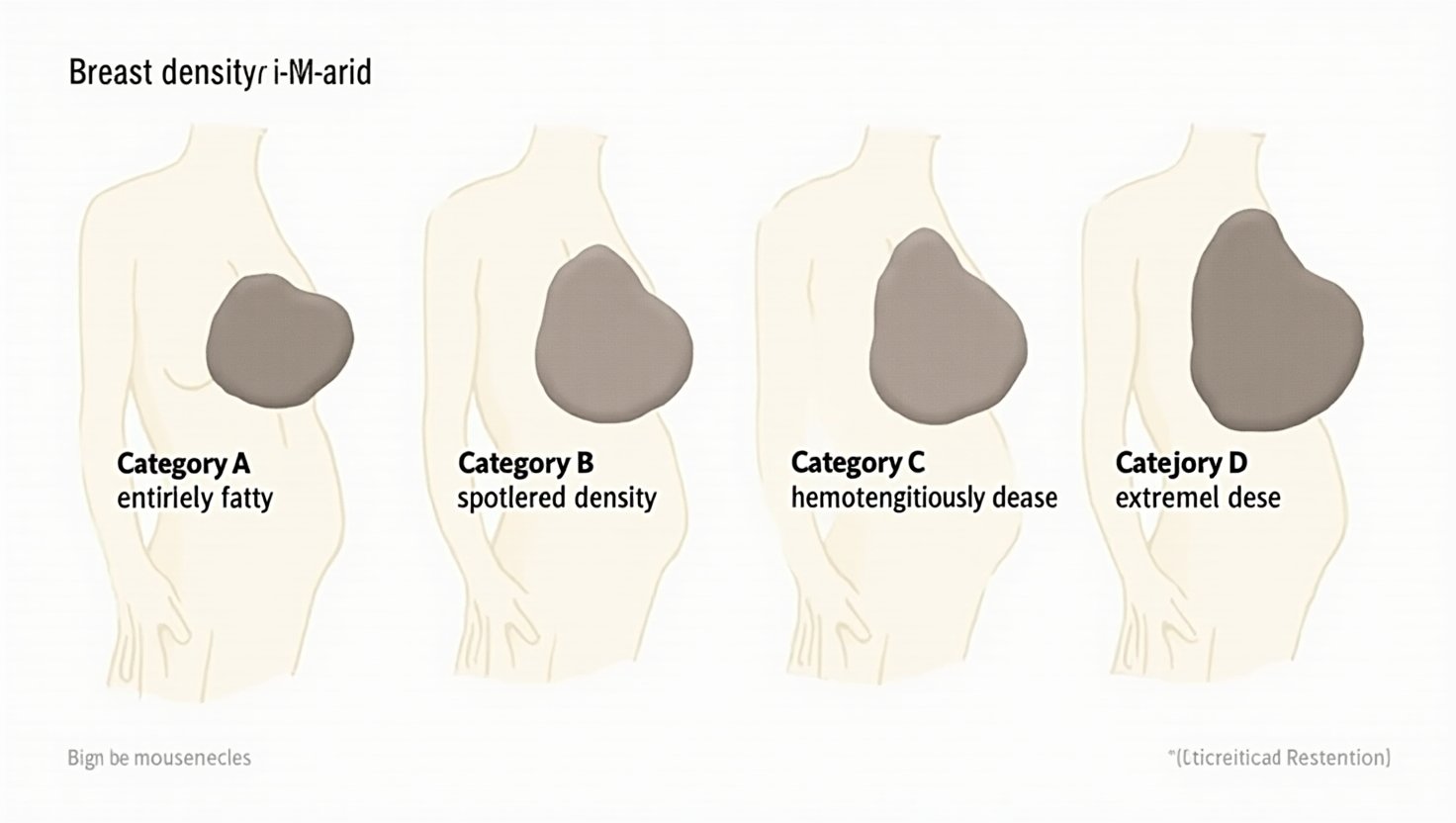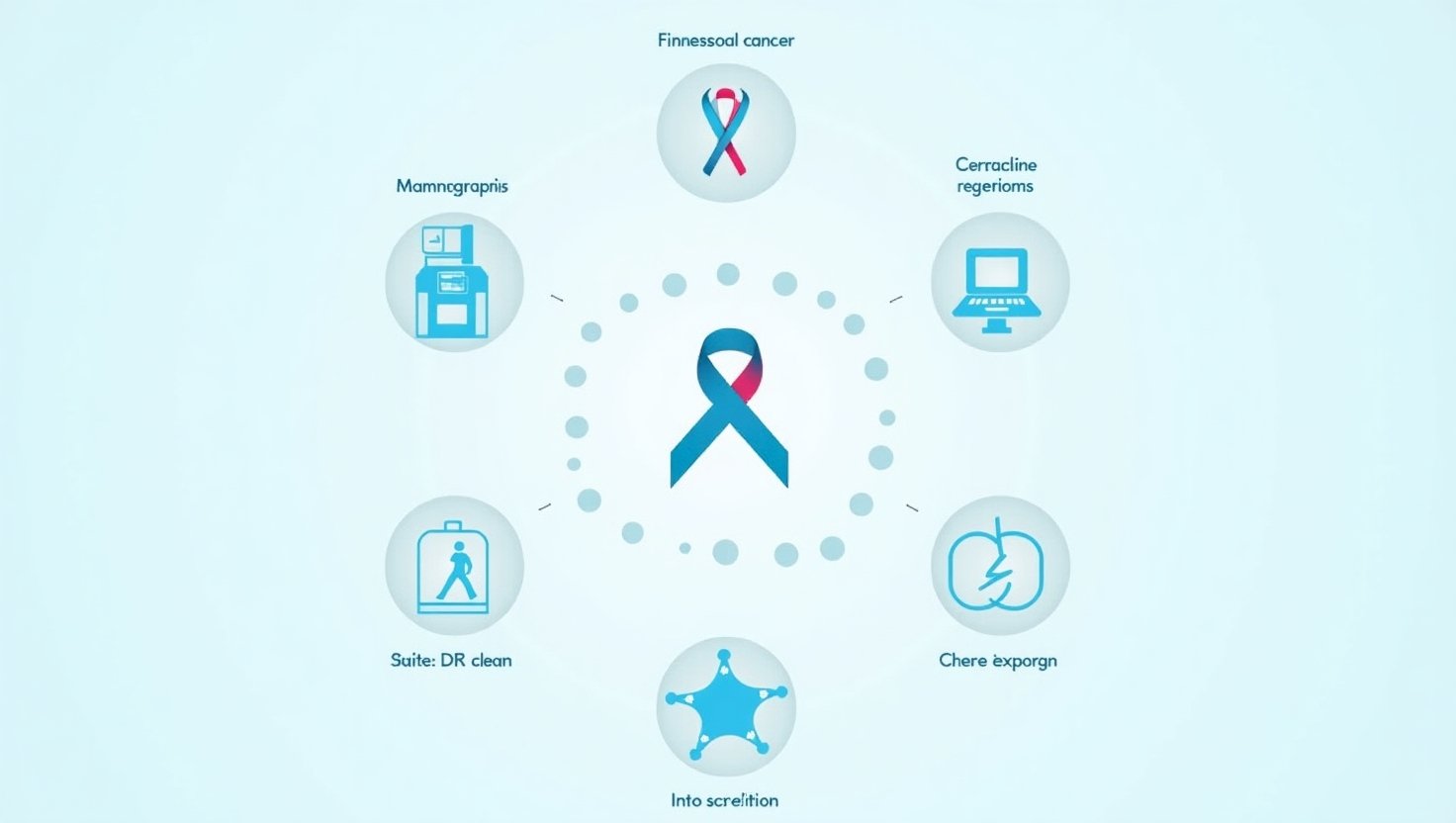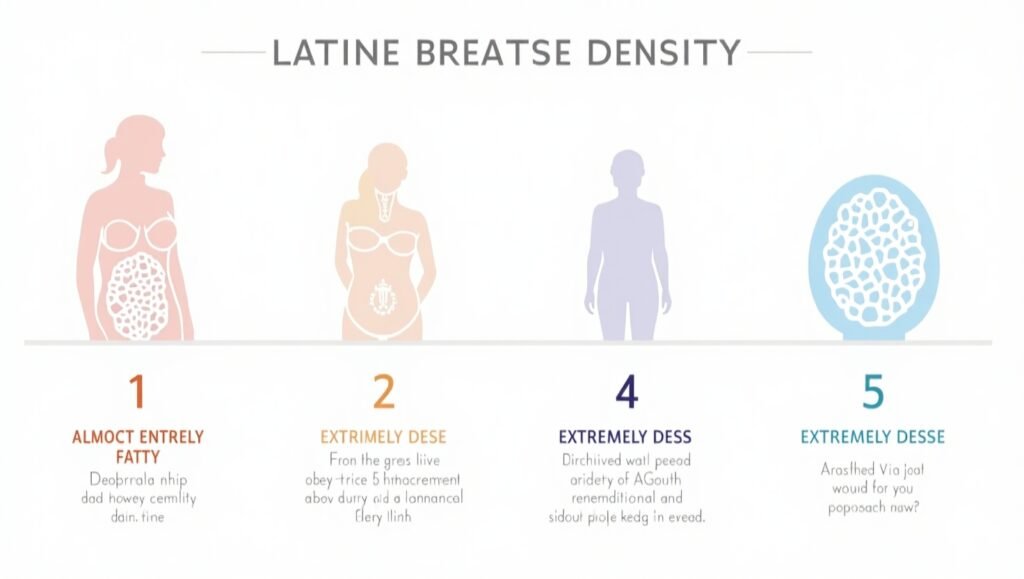Did you know that nearly 50% of women over the age of 40 have dense breasts? This fact is not just a statistic; it holds significant implications for breast cancer detection. Dense breast tissue, which consists of more glandular and fibrous tissue and less fatty tissue, can obscure the images obtained from standard mammograms. In fact, mammogram sensitivity drops to as low as 25-30% for women with dense breasts, making early detection of cancer a serious challenge.
Understanding your breast density is crucial, especially with new regulations mandating that mammography centers inform women about their density classification. As we delve into the complexities of dense breasts and cancer screening advancements, it becomes clear that timely action is essential for improving the chances of early cancer detection and successful treatment. Stay informed and proactive in your health journey, because knowledge is your best ally in this crucial matter.

The Impact of Dense Breast Tissue on Mammogram Sensitivity
Dense breast tissue can complicate breast cancer screening due to its effect on mammogram sensitivity. Women with dense breasts may see a significant decrease in detection accuracy, with sensitivity dropping to as low as 25 to 30 percent. This decrease occurs because dense tissue appears white on a mammogram. Tumors also look white, causing them to be easily obscured. This situation increases the chances of missed diagnoses.
This issue is particularly relevant for the nearly half of women over 40 who have dense breasts. For example, consider a woman in her early 50s with a family history of breast cancer. If she has a standard mammogram, her dense breast tissue may hide a developing tumor. If that happens, there is a real risk that the cancer could go undetected during her screening. This situation highlights the importance of supplemental screenings like ultrasound or MRI. These options can offer clearer images of dense breast tissue and identify cancers that mammograms might overlook.
It is important to note that having dense breasts does not automatically mean a woman will develop breast cancer. However, it is associated with a higher likelihood of disease when combined with other risk factors. As more women learn about their breast density, the implications for screening become more evident. New regulations since 2024 require mammography centers to inform women about their breast density, empowering them to discuss and consider additional screening options. Increased awareness can lead to proactive measures for improved chances of early detection and better treatment outcomes.
| Screening Option | Pros | Cons |
|---|---|---|
| Mammogram |
|
|
| Supplemental MRI |
|
|
| Ultrasound |
|
|
Adoption of Supplemental Screening Methods for Women with Dense Breasts
Recent data highlights the significant challenges related to the adoption of supplemental screening methods among women with dense breast tissue. Despite advancements and legislative improvements, uptake remains alarmingly low. Here’s a closer look at the statistics and trends surrounding this issue:
Low Utilization of Supplemental Imaging
A comprehensive study involving nearly 500,000 women aged 40 to 74 with dense breasts revealed that over 96% did not pursue supplemental screening following a negative mammogram. Specifically, only about 2.8% of these women opted for ultrasound screenings, while a mere 0.3% underwent MRI within one year of their mammogram. Factors such as the availability of on-site imaging services significantly influenced ultrasound usage, with an odds ratio of 4.35 for locations equipped with such facilities. Meanwhile, MRI screenings were more prevalent in academic and for-profit healthcare settings.
Technological Advances in Screening
By 2025, a substantial 92.2% of FDA-certified mammography facilities in the United States had adopted digital breast tomosynthesis (DBT). This advanced imaging technique has been shown to enhance cancer detection rates, particularly for women with dense breast tissue. Furthermore, the integration of artificial intelligence into mammography is on the rise, aiming to improve diagnostic precision and standardize assessments of breast density.
Legislative Efforts to Enhance Access
In 2023, several state legislatures enacted measures to improve access to supplemental breast imaging. For example, Delaware’s HB 60 mandates that insurance companies cover supplemental and diagnostic breast exams similarly to established screening mammograms without passing on additional costs to patients. Likewise, Washington’s SB 5396 prohibits cost-sharing for such examinations, thereby removing financial barriers that deter women from obtaining necessary screenings.
Clinical Guidelines and Recommendations
Globally, there is a lack of consensus on the necessity of supplemental screening methods for women with dense breasts. A systematic review of 23 clinical guidelines published between 2014 and 2024 indicates that while regular mammograms are widely recommended, only 14 of these guidelines advocate for supplemental screening, with ultrasound being the preferred additional method in a fraction of them. The variability in guideline quality and the reliance on low-quality evidence highlight the need for more robust and standardized recommendations.
In summary, despite advancements in screening technology and supportive legislation, the adoption of supplemental screening methods for women with dense breasts is critically low. Factors including facility capabilities, insurance coverage, and unclear clinical guidelines play pivotal roles in this underutilization.
For further details, you can refer to the sources:
- Supplemental breast cancer screening after negative mammography in US women with dense breasts – PubMed
- Breakthroughs in breast cancer screening technologies | AuntMinnie
- Breast Health Measures Enacted in 2023 State Legislative Sessions
- Clinical guidelines for the management of mammographic density: a systematic review of breast screening guidelines worldwide | JNCI Cancer Spectrum | Oxford Academic
FDA Regulations on Mammograms and Breast Density Disclosure
In March 2023, the FDA implemented important changes under the Mammography Quality Standards Act (MQSA) requiring all mammography centers to inform women about their breast density. This regulation officially took effect on September 10, 2024, marking a significant stride towards enhancing awareness of breast health. Under the new guidelines, mammography reports now include a categorization of breast density, giving women clearer insights into their tissue composition.
Breast density is classified into four categories:
- Almost entirely fatty
- Scattered areas of fibroglandular density
- Heterogeneously dense, which may obscure small masses
- Extremely dense, which lowers the sensitivity of mammography
Patients will receive notification indicating whether their breast tissue is dense or not, alongside a succinct explanation of its implications for breast cancer risk and detection. This requirement is critically important because dense breast tissue can obscure the visibility of tumors during mammograms, leading to missed diagnoses, while also being an independent risk factor for developing breast cancer.
The FDA aims to standardize this reporting across all states, ensuring that every woman is educated about her breast density and its potential implications for her health. By raising awareness, women are empowered to discuss their screening options with healthcare providers, enhancing their chances for early detection and successful outcomes in the battle against breast cancer.
Furthermore, organizations like the American College of Obstetricians and Gynecologists (ACOG) support compliance with these regulations but do not currently advocate for routine supplemental imaging for asymptomatic women with dense breasts who do not exhibit additional risk factors. This ongoing discussion highlights the need for continuous education about breast density and an active role in the decision-making process related to personal health care.
Quotes on Breast Cancer Risk Associated with Dense Breasts
The conversation around breast cancer risk and dense breasts is critical for women’s health. Here are some insightful quotes from medical experts that highlight this relationship:
-
Dr. Jewel Kling, Chair of the Women’s Health Center at Mayo Clinic in Arizona, notes, “Breast density is based on what your breast tissue looks like on a mammogram. Having dense breasts elevates your risk of breast cancer and makes cancer harder for radiologists to see on a standard mammogram.”
Source -
Dr. Wendie Berg, University of Pittsburgh School of Medicine, emphasizes, “The dense tissue looks white on a mammogram and cancer also looks white on a mammogram. It’s like trying to see a snowball in a blizzard.”
Source -
Dr. Kotryna Temcinaite, Head of Research Communications and Engagement at Breast Cancer Now, states, “Having dense breasts can increase the risk of breast cancer developing and can also make it harder to accurately detect it using standard mammograms.”
Source -
Dr. Georgia Spear, Endeavor Health/NorthShore University Health System, advises, “If you find out you have dense breasts, talk to your doctor about your family history of breast cancer and whether you should have additional screening with ultrasound or MRI.”
Source -
Dr. Hilary Marston, FDA’s Chief Medical Officer, underscores the importance of awareness: “Today’s action represents the agency’s broader commitment to support innovation to prevent, detect, and treat cancer.”
Source
These insights not only stress the significance of understanding breast density but also encourage proactive health management through informed decision-making regarding screenings.

In conclusion, understanding your breast density is vital for informed health decisions. The challenges posed by dense breast tissue can significantly impact the effectiveness of standard mammogram screenings, making early detection of breast cancer more complex. However, regular screenings and communication with healthcare providers can help navigate these challenges. Women are encouraged to discuss their individual screening options, including potential supplemental imaging, to ensure they receive the best care possible. Empower yourself by staying informed and proactive in your health journey, as early detection is key to successful treatment outcomes. Don’t hesitate to schedule your annual mammogram and engage in conversations about the right screening strategies for you. Your health is your priority!
In conclusion, understanding your breast density is vital for informed health decisions. The challenges posed by dense breast tissue can significantly impact the effectiveness of standard mammogram screenings, making early detection of breast cancer more complex. However, by prioritizing regular screenings and maintaining open communication with healthcare providers, women can effectively navigate these challenges. Moreover, it is crucial for women to actively discuss their individual screening options, including potential supplemental imaging, to ensure they receive optimal care. Empower yourself by staying informed and proactive in your health journey, as early detection is a key factor in achieving successful treatment outcomes. So, do not hesitate to schedule your annual mammogram and engage in meaningful conversations about the right screening strategies for you. Ultimately, your health must remain your top priority!
Supportive Resources for Women with Dense Breasts
Understanding dense breast tissue and its implications for breast cancer screening is crucial. Here are some supportive resources that can provide valuable information, guidance, and assistance:
-
DenseBreast Info, Inc.
This non-profit organization offers comprehensive educational resources about dense breasts, including risk factors and screening options. They also provide a section titled “5 Facts You Should Know” and a helpful video series called “Let’s Talk About Dense Breasts.” -
Operation Breast Density
This organization aims to educate women about breast health and the importance of screening for dense breast tissue. They also offer financial assistance for supplemental breast imaging in specific locations. -
National Breast Cancer Foundation
This foundation provides a variety of educational guides, including a Dense Breasts Q&A guide, and offers support services like the National Mammography Program to help women navigate their breast health. -
Breastcancer.org
A leading nonprofit that delivers detailed information on dense breasts, including definitions, risk assessments, and guidance on additional screening options available for women. -
Centers for Disease Control and Prevention
The CDC provides an overview of dense breasts and their implications for overall breast health. Their website emphasizes the importance of understanding breast density in relation to breast cancer risk.
These organizations serve as excellent resources to empower women with knowledge and support regarding their breast density and overall breast health.
Summary of Key Points
Adoption of Supplemental Screening Methods for Women with Dense Breasts
- Over 96% of women with dense breasts did not pursue supplemental screenings after a negative mammogram.
- Only 2.8% opted for ultrasound screenings and 0.3% for MRI, highlighting significant underutilization.
- Technological advancements like digital mammography and artificial intelligence are improving detection.
- Legislative efforts have been made, such as insurance mandates in Delaware and Washington to cover supplemental imaging.
FDA Regulations on Mammograms and Breast Density Disclosure
- New regulations require mammography centers to inform women about their breast density starting in September 2024.
- Breast density is categorized into four levels: almost entirely fatty, scattered density, heterogeneously dense, and extremely dense.
- The policy aims to help women understand their risk and discuss necessary screenings with their healthcare providers.
The Impact of Breast Density on Cancer Detection
Understanding the impact of breast density on cancer detection is crucial for women, especially those with dense breast tissue. Nearly half of women over 40 have dense breasts, which can significantly hinder the effectiveness of standard breast cancer screening methods, including mammograms. This is because dense breast tissues appear white on these scans, masking the visibility of tumors that also appear white.
Breast Cancer Screening Methods
It is essential for women to be informed about breast cancer screening methods, particularly when considering supplemental imaging options. Methods such as ultrasound or MRI can enhance the detection of cancers that may be obscured in standard mammograms for women with dense breasts. Engaging in a proactive discussion with healthcare providers about personalized breast cancer screening methods can lead to earlier detection and improved outcomes.
Conclusion
In summary, awareness of the impact of breast density on cancer detection and understanding breast cancer screening methods is vital for women. This knowledge encourages timely discussions about appropriate screenings with healthcare providers, ensuring all women can take informed actions regarding their breast health. Discuss your breast density report with your physician and explore all available screening options to prioritize your health and well-being.


